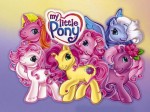Network Branding, Convergence, and Hasbro/Discovery’s New Kids Channel
 Last April, toy maker Hasbro and Discovery Communications announced they were partnering together to form a new cable network for kids. Set to replace the Discovery Kids channel, this new joint venture would bring consumer-driven content from Hasbro’s well-known brands, including G.I. Joe, My Little Pony, Transformers, and Tonka, (back) to television, while also extending a merchandising arm to existing Discovery Kids media properties like Adventure Camp and Flight 29 Down.
Last April, toy maker Hasbro and Discovery Communications announced they were partnering together to form a new cable network for kids. Set to replace the Discovery Kids channel, this new joint venture would bring consumer-driven content from Hasbro’s well-known brands, including G.I. Joe, My Little Pony, Transformers, and Tonka, (back) to television, while also extending a merchandising arm to existing Discovery Kids media properties like Adventure Camp and Flight 29 Down.
The introduction of a new network to the 14-and-under cable market is certainly a big development, but what catches my attention most about the news is the way that Hasbro and Discovery are choosing to brand the new channel. Questions of branding for networks/channels (terms I’m using interchangeably here) seem even more complex in our current media climate, where the proliferation of channels seems to necessitate cohesive, strong brands, but the unmooring of television texts from the actual channel into their own contained identities (DVD box sets, DVR items, online downloads) can undermine or make unnecessary those same network/channel brands. Nevertheless, brands are still important – TNT knows drama, USA loves characters, and NBC wants to be more colorful. Brands are especially important in the kids cable game, where you have to please both children and parents – Disney’s legacy mantra of fun and childhood magic appeals to kids and keeps parents’ trust, while Nickelodeon espouses education for the adults and autonomy for the young (kids rule!).
Hasbro and Discovery’s new joint venture, though, is trying to do that and more. The press release last month revealed the new channel’s name and logo – The Hub. Talk about aiming for convergence.
The rhetoric in the release talks mostly about The Hub as a convergence of two other brands as opposed to a variety of media platforms (the spiral logo “symbolizes a catalyst of action and imagination,” the result of bringing together Hasbro’s core tenet of play and Discovery Kids’ core tenet of curiosity, so says the presser), but the new brand clearly lends itself to notions of changing media experiences. It at once recognizes the mobility of both television texts and viewers, while offering a shared location for both. In this way, ‘The Hub’ has the potential to be quite successful, both as a network and a brand.
But with a name like ‘The Hub,’ I can’t help but think back to the mid-late 1990s, when we all thought hubs/portals were the way we’d conceive of space the internet, and what a failure it turned out to be for all those companies not named Google or Yahoo!. (I’m looking at you, Disney and Go.com.) And of course, Hasbro and Discovery aren’t the first ones to try a sense of mobility in a television brand – ABC’s “Start Here” concept has been hard at work since 2007. It’s not exactly clear just how well The Hub will make use of its franchises across platforms – its website, hubworld.com, is just a landing page for now. Even so, Hasbro and Discovery are laying a notable foundation in the brand. Could The Hub actually live up to its goal of “reimagining the future of children’s entertainment”? Who knows. But I’ll be watching (and clicking. and downloading) when the channel goes live this fall.




Wow; calling it “the Hub” is, as you point out, rich with significance. Time will tell if it’s hubris as well. There’s a dynamic of branding at work in this attempt that particularly syncs with dominant industrial conceptions of childhood and entertainment flow. That is, in contrast to the over-18 world, there’s still a sense that kids will lock on to more of the same (or at least, lock on to what’s adjacent, as in what’s next on the schedule if you leave that channel on). Hasbro tried to do something like this 25-30 years back, with other partners (broadcast syndicators rather than cable channels), and great success, with many of the same brands. So “the Hub” is enticing as a name not so much for kids but for potential partners and advertisers. I think the witch in Hansel and Gretel called her cottage, “the Hub,” but I could be mistaken…
It’s also worth noting what we’re likely losing with the demise of the current iteration of Discovery Kids: fantastic and slightly less brandable shows like The Magic School Bus and PEEP and the Big Wide World, both of which my kids love. And yes, those 15-year old episodes of TMSB still hold up for six year-olds! However, they’re each the kind of kids’ programming that doesn’t foreground products.
Yes, to lose the Magic School Bus and Ms. Frizzle would be a travesty! But given the equity and awareness already built for shows like that, it’d be silly to lose them altogether, in my opinion. Chances are they might just go in less-watched day parts. But, we’ll see – they haven’t announced many solid programming decisions yet.
And great point about industrial conceptions of flow for the under-14-ers and enticement. I had a line in an earlier draft of this post about marketers seeing the the Hub’s “spiral logo” as another metaphor for 360-degree-advertising (one of my least favorite buzzwords). But you’re right in thinking about them staying on the channel – the Hub signals staying power and gathering place just as much as mobility. Will be interesting to see how it develops and how the channel constructs its bumpers, promos, and ‘master narrative.’
What a great post, Lindsay. As a reluctant preschool TV consumer extraordinaire, I am fascinated.
Oh the McDonalds Happy Meal toys to come!
I confess that my kids will surely be Hub fans– my 3 year-old won’t know how to process the news that his beloved Transformers are on TV without letting his head explode from oy.
PBS Kids frequently pushes their website at the end of each episode, as does Nick Junior, and kids can visit these sites to extend their viewing pleasure, download crafts and coloring pages, and basically become superfans across media. All of the PBS and Nick Junior characters are on every product imaginable, from chemical-filled fruit snacks, to diapers, to BandAids, to frozen ravioli. Walk through a Target store with a toddler and see how many times s/he screams Dora, SpongeBob, Elmo, etc. I don’t get how much more brand synergy the Hub can feature. I get that they’ll be making cartoons about popular toys, but since most cartoons get turned into popular toys, how are they doing anything new?
I was excited to see mention of Romper Room, a show I remember from my own preschool TV days. We can’t overlook the importance of nostalgia. Nothing assuages the my-kids-are-watching-too-much-TV guilt better than a show or two that we grew up on.
that should say joy, not oy.
Great points… thanks, Sarah. You’re right – many kids channels already employ web-based tie-ins and product licensing galore. Kids’ media is a wonderland of intertextuality, often to an extent unparalleled in adult properties. But I would say that Web sites and licensed ancillary products are still… ancillary. Television channels still try to have a sort of hierarchical relationship to those other media (for a variety of reasons), and content on other platforms is just re-purposed, not narratively integrated.
A brand called the Hub, though, signaled to me that Hasbro/Discovery could take it a step further and conceptualize the ancillary platforms/products as much more than that. It could recognize the mobility of texts and viewers and synthesize experiences from the web, television, merchandising, etc. in more involved strategies of transmedia story-telling and world-building. I have to admit that I’m a little skeptical that, once it launches, it will actually be much different from anything that’s out there now. But the branding efforts filled me with intrigue.
And as for nostalgia – I totally agree. Nostalgia plays such a huge role in youth media these days, and you hit the nail on the head – it works through its familiarity and built-in approval from parents. It’s a huge factor here – concerns of materialism circulated around these show in the late 1970s/early 80s when they were introduced as the first toy-driven media franchises, but one could argue that some of those concerns are muted as they return to TV 25 years later, when their original fans are now parents.
There’s a Sunday strip of Bill Amend’s FoxTrot that showcases a pitch Jason and his friend Marcus are working on for a Saturday Morning cartoon surrounding Jason’s fictional super-hero Slug-Man. I’ve always loved the strip, as everything is organized around the potential for action figure playsets, and at the end Marcus asks Jason whether it’s customary to approach networks first or go right to the toy manufacturers. The Hub, of course, has brought the two together, and it’s interesting to see how what was once considered a joke has become an accepted part of how television programming is made. The same even goes for film: Pixar, oft considered the bastion of creativity in the world of animation, is not answering fans’ cries for a sequel to Cars, but rather bolstering their bottom line by creating a sequel to a film that was an international box office disappointment but has made them hundreds of millions in licensing deals.
I like that we’ve moved past a simple cynical response, that Hasbro partnering with Discovery is not seen as the death of creativity in and of itself. However, I’m with Sarah in that I don’t particularly see any real places for the “Hub” to go which would really change what already exists, and considering the workout my gag reflex got reading that press release I have no expectations that their new branding discoveries will actually result in better or more satisfying programming on any level. This isn’t an evil strategy, but it doesn’t sound like a particularly organized one either, and while (like Cars 2) it might be a good idea in theory I don’t know if it feels particularly creative or novel at the end of the day.
I know that FoxTrot strip! I love it. Hasbro’s been in the let’s-start-with-the-toy-first-and-then-do-a-TV-show business for decades (G.I. Joe, He-Man, She-Ra, etc.) – we’re really just coming back around to it. ANd this time, instead of just working with the production company, Hasbro owns the network.
ANd, like I said above in responding to Sarah, I am definitely not holding my breath for any major innovation from the Hub. I did a lot of eye-rolling in reading the press release, for sure. Total generic business speak. But like you say, I wanted to offer more than just a simple cynicism. Network brands have always interested me. And this one lends itself to interesting connotations and *could* do interesting things. That doesn’t mean it will. But who knows. 🙂